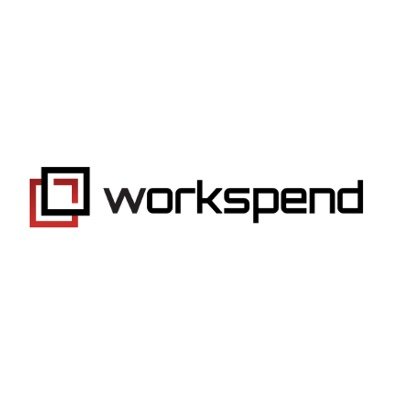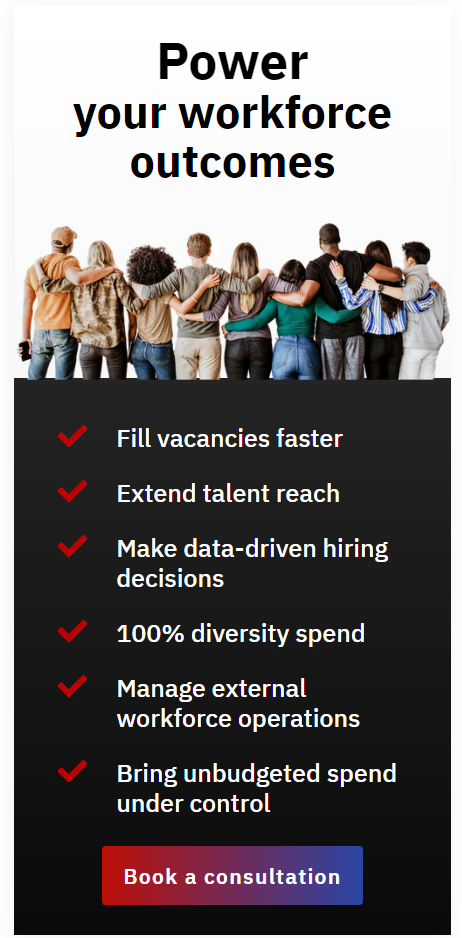Published : July 31, 2024
Optimizing Temporary Staffing Processes: Enhancing Agility and Productivity
Temporary staffing is more important than ever. Companies rely on it for flexibility, specialized skills, and the ability to adapt to unpredictable market shifts. However, traditional temporary staffing processes are often plagued by inefficiencies, spiraling costs, and missed opportunities.
Lengthy time-to-fill delays critical projects, exorbitant agency fees drain budgets, and concerns over worker quality and administrative overhead create unnecessary distractions. These issues not only hinder productivity but can also compromise your competitive edge.
A strategic approach to temporary staffing is the key to transforming it into a powerful tool for growth. By streamlining temporary staffing processes, leveraging cutting-edge technology, and adopting data-driven decision-making, you can achieve workforce optimization, overcome these challenges and unlock the full potential of your contingent workforce.
In this article, you’ll discover actionable strategies to optimize your temporary staffing processes, reduce costs, improve the quality of hires, increase agility, and ultimately drive greater success for your organization.
Current Challenges in Temporary Staffing
Talent acquisition bottlenecks often arise when seeking qualified candidates, especially those with specialized skills or during periods of high demand. Traditional recruitment methods can be slow and inefficient, leaving critical positions vacant and projects stalled. The financial implications of relying on temporary staffing agencies and traditional recruitment methods are also a major concern, with the potential for inflated costs due to agency fees and markups.
According to research by PwC, 85% of businesses either have or expect to have shortages in key skills within the next five years.
Furthermore, ensuring the right fit between a temporary worker’s skills and the job requirements can be a challenge. Misalignment can lead to suboptimal performance and costly delays. The administrative overhead associated with managing a contingent workforce, including onboarding, payroll, and compliance, can also be overwhelming for HR professionals.
Strategies for Workforce Optimization
To overcome these challenges, a strategic approach to temporary staffing is essential. This involves prioritizing proactive workforce planning, which includes forecasting staffing needs based on historical data, project timelines, and anticipated fluctuations in demand. By anticipating requirements well in advance, organizations can avoid last-minute scrambles and ensure the right talent is available when needed.
Direct sourcing, or leveraging technology platforms and cultivating direct relationships with talent, is another key strategy for optimization. This approach reduces reliance on staffing agencies and empowers organizations to choose the best fit for each role based on a wider pool of pre-vetted candidates.
A recent Gartner survey revealed that 48% of HR leaders plan to increase their 2024 HR technology budget, specifically to optimize temporary staffing processes and achieve workforce agility.
Additionally, implementing a Vendor Management System (VMS) can streamline the entire temporary staffing process, with a strong emphasis on cost reduction in temporary staffing. From requisition to onboarding, performance management, and offboarding, a VMS centralizes and automates key tasks, increasing efficiency, improving visibility, and reducing administrative overhead,
Finally, effective performance management is crucial for maximizing the value of a contingent workforce. Setting clear expectations, providing regular feedback, and conducting ongoing evaluations ensure that temporary workers are meeting or exceeding performance goals, driving productivity, and achieving desired outcomes.
Benefits of Workforce Optimization
Optimizing temporary staffing processes delivers tangible and substantial benefits to organizations. By adopting a strategic approach to temporary staffing, companies can achieve significant cost reduction in temporary staffing through workforce optimization, improve time-to-fill, enhanced quality of hires, and increase overall agility. Streamlined processes and efficient workforce planning minimize overtime costs and ensure optimal resource allocation. The ability to quickly identify and deploy qualified temporary workers eliminates delays, ensures business continuity, and accelerates project timelines.
A focus on quality ensures that temporary workers possess the precise skills and experience required for each role, maximizing productivity and minimizing the risk of mismatches. Perhaps most importantly, an optimized temporary staffing process empowers organizations with the agility needed to thrive, allowing them to rapidly scale their workforce up or down in response to changing demands.
Workspend’s Unique Approach
Workspend’s approach to temporary staffing addresses these challenges head-on. Our data-driven methodology and cutting-edge technology empower organizations to optimize every stage of the temporary staffing process. Our WRAP platform provides unparalleled visibility into workforce analytics, enabling data-driven decision-making and continuous improvement.
We understand that every organization has unique needs and challenges. That’s why Workspend offers customized solutions tailored to each client’s specific requirements. Our team of experts works closely with clients to develop and implement strategies that align with their business goals and objectives. We don’t believe in a one-size-fits-all approach. Instead, we focus on building strong partnerships with our clients, providing ongoing support and guidance to ensure their success.
Workspend’s commitment to excellence extends beyond the initial implementation of our solutions. We believe in continuous improvement and strive to help our clients achieve ongoing success with their temporary staffing programs. Through regular consultations, performance reviews, and data analysis, we work hand-in-hand with our clients to identify opportunities for optimization and ensure that their workforce remains agile, efficient, and productive.
Final Thoughts
The ability to adapt quickly and efficiently is paramount. A strategic approach to temporary staffing, underpinned by data-driven decision-making and a commitment to continuous improvement, is no longer a luxury but a necessity. By embracing the tools and strategies outlined, you can optimize your temporary staffing processes, reduce costs, enhance quality, and achieve unparalleled agility. The result? A workforce that’s not just responsive, but proactive – a workforce poised to meet any challenge and seize every opportunity. The future of work is flexible, and with the right approach, temporary staffing can be your most valuable asset.
Ready to revolutionize your temporary staffing processes and unlock the hidden potential of your workforce? Take the first step today and contact Workspend for a free consultation and discovery assessment.
Our customized solutions and cutting-edge technology can transform your approach to temporary staffing, resulting in improved efficiency, significant cost savings, and enhanced workforce performance. Don’t let outdated practices hold you back. Partner with Workspend and experience the difference a strategic approach can make.
You may also like:
Why a Vendor-Neutral MSP is Essential for Contingent Workforce Success
Discover how a vendor-neutral MSP improves workforce quality, supports diverse talent, helps with strategic planning and more.
AI Should Augment Human Intelligence, Not Replace It
Will smart machines replace human workers? How human intelligence can work with artificial intelligence to produce augmented intelligence.
SLAs and KPIs: How to Optimize Measuring MSP Success
SLAs and KPIs: How to Optimize Measuring MSP Success The modern workforce is increasingly dependent on contingent talent, making effective contingent workforce management of temporary staff a top priority for many organizations. A Managed Service Provider (MSP) is...





